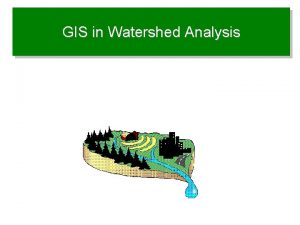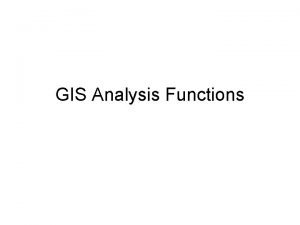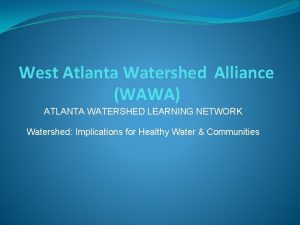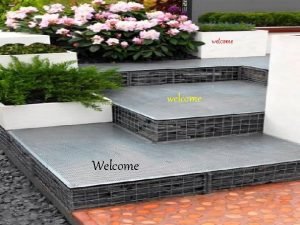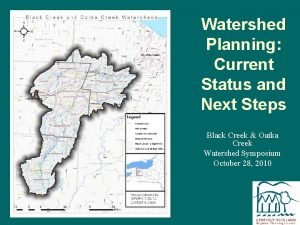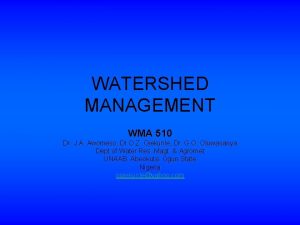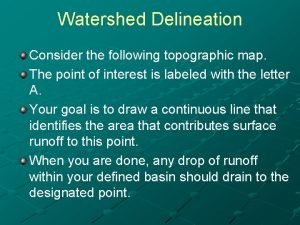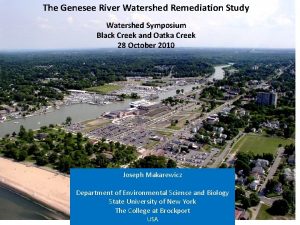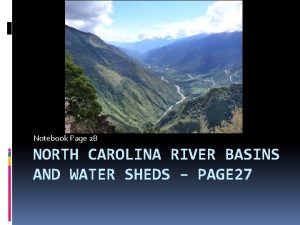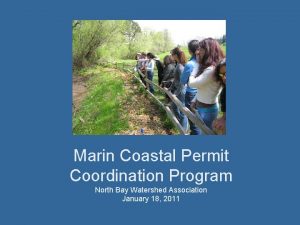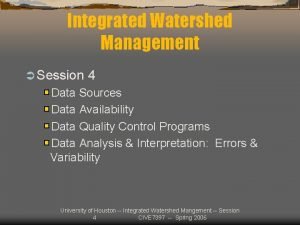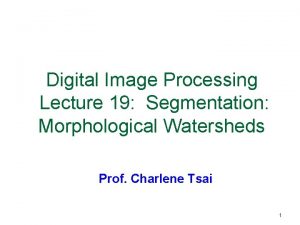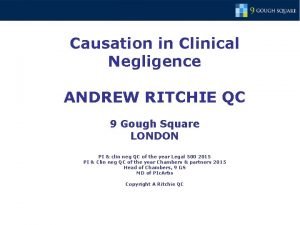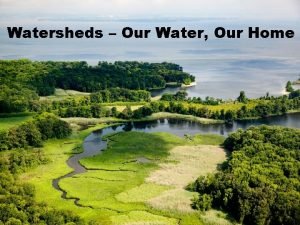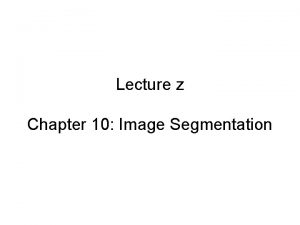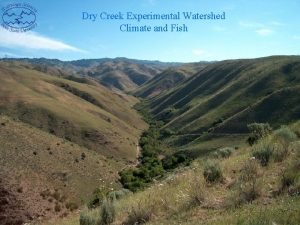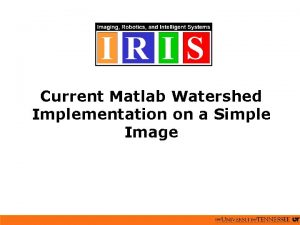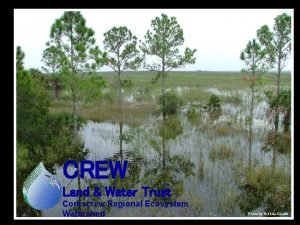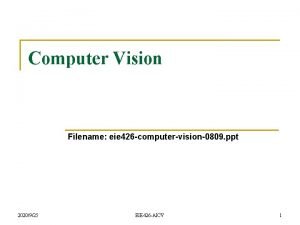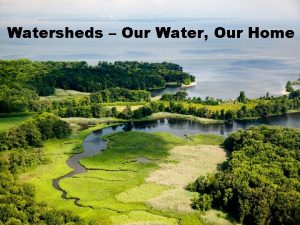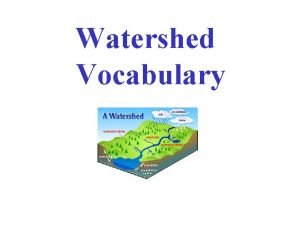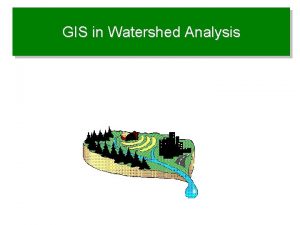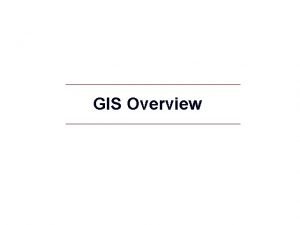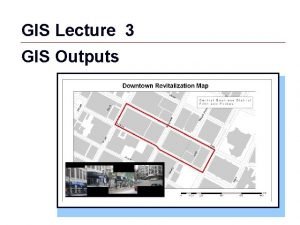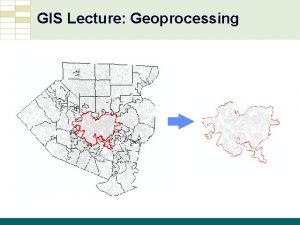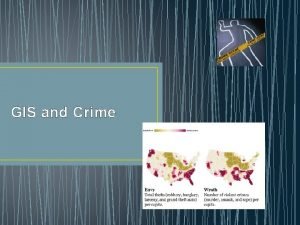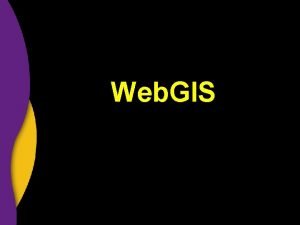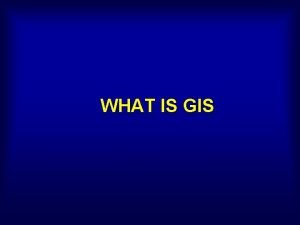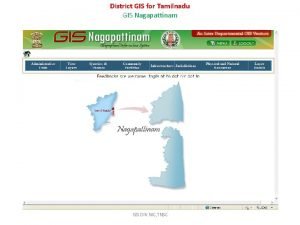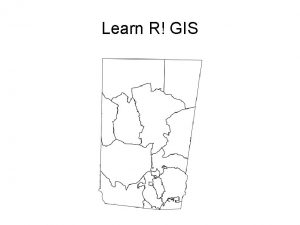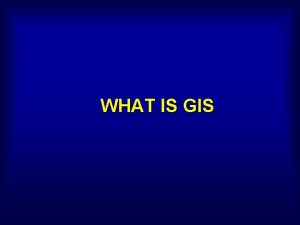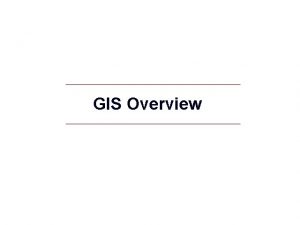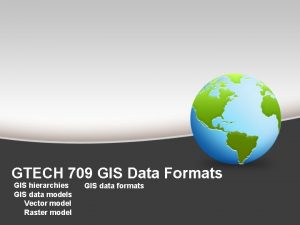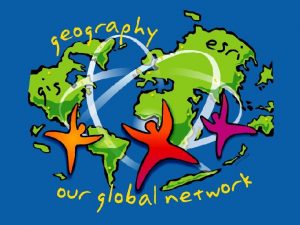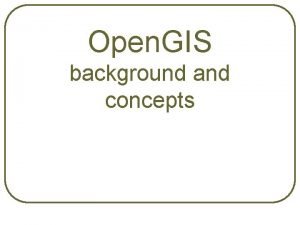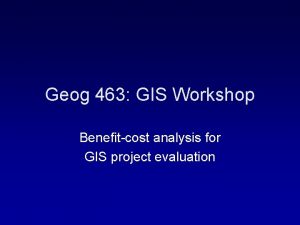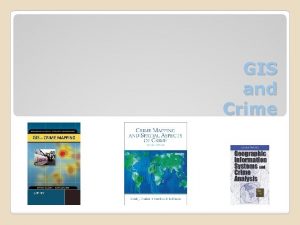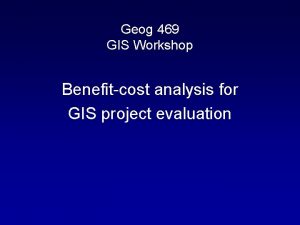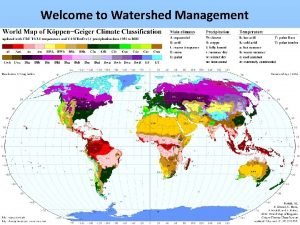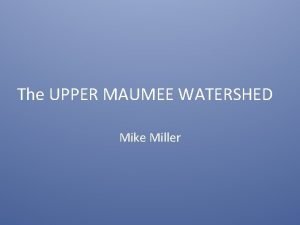GIS in Watershed Analysis Why watershed Analysis with




























- Slides: 28

GIS in Watershed Analysis

Why watershed Analysis with GIS? • Concepts • Important datasets • Analysis Tools

Regional stressors

Impacts of Human Activities Timber Mining Agriculture Stream alterations

Watershed based frameworks • Integrative approach • Legislative roots in the 1972 Clean Water Act – Goal to clean up and protect US water bodies from point and nonpoint sources 2012 Designated uses – evaluated as part of the Clean Water Act

Watershed cataloging units USGS Regions (2 digit)

Watershed cataloging units USGS Sub-regions (4 digit)

Watershed cataloging units USGS Sub-basins (8 digit)

NRCS WBD • Watershed Boundary Dataset (WBD) • HUC 8, 10, 12 and beyond http: //datagateway. nrcs. usda. gov/

Issues • More local watersheds needed • One to one relationship between land cover runoff and receiving stream segment • Track runoff from land to stream

Example of scale differences DNR Stocked streams Tier 2. 5 - Reproducing trout streams Impaired streams Watershed boundaries 11

Previous method • Delineate watershed boundaries using the topography to guide us

Manual method

subwatersheds 14

Segment-level watersheds • Benefits: – Hydrologically based – Not based on drainage area cutoffs – Not based on management areas – Stream segment by segment – Fully compatible with 1: 100 K and 1: 24 K NHD – Networked, based on NHD

Existing issue • Nesting of watersheds • Pass through issues

Watershed modeling • Segment level watersheds can be used in watershed modeling • Also compiled flow tables for each watershed Outlet Watershed Schematic: Simplified segment-level watersheds and associated flow table

Geospatial Technologies and Water Resources • A valuable tool for water resources management GTs in watershed management: 1. Elevation surface is key 2. Delineate watersheds 3. Track flow from a point 4. Find intermittent stream paths 5. Calculate drainage areas

GIS use in the hydro cycle

Elevation surface or grid • The starting point for all hydrological modeling in GIS • USGS Digital elevation model 30 m or 10 m elevation cells, or 3 m for WV • Each cell or grid represents a value for the elevation






Summary points • Watersheds are the key unit of analysis for examining water quality issues • Scale issues require us to delineate smaller watersheds for local issues • GIS can aid in watershed management by 1. 2. 3. 4. 5. Using elevation grids Delineate watersheds Track flow from a point Find intermittent stream paths Calculate drainage areas

Limitations • Static snapshot of data • Older Elevation grids • Only modeling surface interactions

Questions / comments?
 Gis watershed analysis
Gis watershed analysis Pictures
Pictures Don't ask why why why
Don't ask why why why Why-why analysis
Why-why analysis Contoh laporan root cause analysis
Contoh laporan root cause analysis Gis analysis functions
Gis analysis functions Gis analysis functions
Gis analysis functions Wawa in atlanta
Wawa in atlanta Gabion structure watershed
Gabion structure watershed Components of a watershed
Components of a watershed Watershed management meaning
Watershed management meaning Contour map watershed delineation
Contour map watershed delineation Genesee river watershed
Genesee river watershed Difference between watershed and river basin
Difference between watershed and river basin North bay watershed association
North bay watershed association Integrated watershed management
Integrated watershed management Watershed morphology
Watershed morphology 9 gough square
9 gough square Watershed poster ideas
Watershed poster ideas Local watershed definition
Local watershed definition Lecture z
Lecture z Darshan ppt
Darshan ppt Tukwila
Tukwila Dry creek experimental watershed
Dry creek experimental watershed Matlab watershed
Matlab watershed Crew land and water trust
Crew land and water trust Computer vision ppt
Computer vision ppt Watershed poster ideas
Watershed poster ideas Watershed vocabulary
Watershed vocabulary
